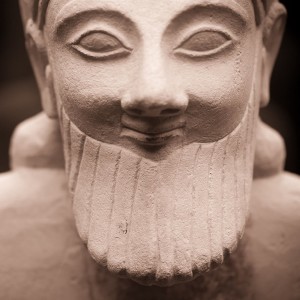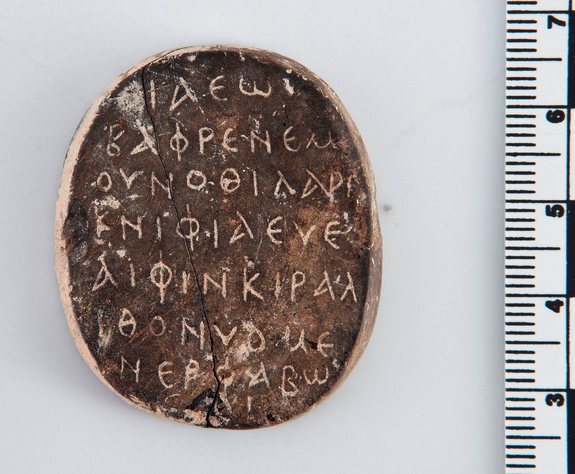The History of Cyprus Podcast
Welcome to The History of Cyprus Podcast -- a monthly series exploring the island’s past from 10,000 BCE to the 20th century. Each episode features in-depth conversations with leading scholars in archaeology, linguistics, political and social history, bringing academic insight to a wide audience. Together, we uncover the languages, cultures, conflicts, and legacies that shaped one of the Mediterranean’s most storied crossroads. Whether you’re a student, a history enthusiast, or just curious about Cyprus, this podcast offers something for everyone -- rooted in research, driven by storytelling. If you’d like to reach me, my name is Andreas. Please feel free to send me an email at cyprusthepodcast@gmail.com --------------------------------------------------------------- Follow The History of Cyprus Podcast Instagram and support the show on Patreon: https://www.patreon.com/TheHistoryofCyprusPodcast https://instagram.com/thehistoryofcyprus *The podcast image, ”Dressed for the Gods” (250BC) is from the British Museum taken by William Warby. Check out more of his work at flickr.com/photos/wwarby/
Episodes

16 hours ago
16 hours ago
Merry Christmas! 'Tis the season to light your fireplaces and put out your colanders -- the 12 Days of Christmas are here! And of course you know, that means those pesky Kalikantzari (Christmas goblins) are back again, sowing mischief and cruel tricks. But it's not all bad news. Minos Papas' latest feature film* is making its rounds globally and featuring at the International Film Festival Rotterdam. I had the opportunity to screen the movie a couple weeks ago and chat again with Minos. This film is truly his love letter to Cyprus, its history and its heritage. In this episode, we chat about the performances, the themes and the post-production that went into the film. You'll also get to hear updates on how and when you can see the movie!
*If you missed our first interview with Minos on the folklore and the making of Motherwitch, check out "Fantasy, Folklore & Film: 'Motherwitch' with Minos Papas" (October 2024)
>>> https://iffr.com/en/iffr/2026/films/motherwitch

Monday Dec 15, 2025
Monday Dec 15, 2025
The Acritic Songs are a collection of Byzantine folk songs whose origins date back to the 9th-11th centuries. These songs celebrate the exploits of the "Acritae," or the frontiersmen, who patrolled the empire's periphery, protecting it from Saracen (Arab) marauders. Though we don't know the exact contexts in which these songs were performed, we know that they appealed to the bottom rungs of society, the disenfranchised and the down-trodden, as the songs were adopted and adapted all over the Greek speaking world -- including, of course, Cyprus. These songs were passed down in oral tradition and adapted linguistically in Cyprus in a way that reflected its own social and political realities. The stories themselves generally fell into two categories: those that celebrate royal authority and look towards God or the State as a source of comfort and protection (ca. 9th-12th centuries) and those which celebrate the hero fighting authority and resisting the cosmic order which is dated after the 13th century (see: Charopalema i.e., Digenis' battle with Death).For this particular song, as interpreted and performed by Michalis Christodoulides Costas Charalambides and Areti Kasapi (and can be purchased here)*, we hear an excerpt from "Ο Κάουρας" (i.e., The Crab). In the song, a giant, monstrous crab chokes the waters of a village/town, terrorizing the community. One of the most notable Acritic heroes, Digenis Akritas, is called upon to defend the people from its terror. The story of the Giant Crab evokes Herculean themes. Those familiar with Greek mythology might identify Digenis's battle with Hercules fighting Karkinos that came to assist the Lernean Hydra. Next month, I welcome back Dr. Chrysovalanti Kyriacou to discuss the Acrites and the Byzantine Warrior Hero!The Acritic Songs on YouTube*Στες Άκρες Των Άκρων - Ακριτικά Τραγούδια Της Κύπρου: Μιχάλης Χριστοδουλίδης, Αρετή Κασάπη, Κώστας Χαραλαμπίδης**Artwork by Dimitris Skourtelis

Tuesday Dec 02, 2025
Tuesday Dec 02, 2025
Material culture-textiles, ceramics, furniture, even the games people played-offers us a window into the lived experience of a diverse society. From the magnificence of the Lusignan court, with its gold-threaded tapestries and Venetian clocks, to the humble cooking vessels of the lower classes, these artifacts reveal not only economic and social divides but also cultural exchanges that blurred the lines between Greek, Latin, and near east traditions.
Yet, such information is not always easy to find. Few archaeological excavations of the settlements themselves have been conducted on medieval Cyprus, so most of what we know comes from written sources--the accounts of travelers and chroniclers who were dazzled by the nobles’ riches, or the inventories of men like Guy d’Ibelin, a bishop whose household possessions testified both to his monastic vows and to his feudal rank.
What can the material culture of medieval Cyprus tell us about its people, their identities, and their aspirations? How did objects serve as status symbols, as well as tools of everyday survival? What are some of the challenges historians and archaeologists face when reconstructing the material world of the past-especially for those at the lower levels of society?
In this episode, I am joined by Dr. Maria Parani to help us piece together this fascinating mosaic of history.

Saturday Nov 15, 2025
Saturday Nov 15, 2025
To begin with, I'd like to draw your attention to the music in this primary source. It is called J. II. 9 (Turin Codex) also known as the Cyprus Codex, an anonymous manuscript created at the Nicosia court in the early 15th century during the Frankish rule of Cyprus under the Lusignan Dynasty. It is the only known source of Western music from the region and one of the rare exclusively French codices from that era. In other words, you're listening to Medieval Cypriot music that has been reconstructed by Dimitris Kountouras. The full album*, "ΜΟΥΣΙΚΗ ΑΠΟ ΤΗΝ ΑΥΛΗ ΤΩΝ ΛΟΥΖΙΝΙΑΝΩΝ: Ο ΚΩΔΙΚΑΣ ΤΗΣ ΚΥΠΡΟΥ" can be purchased here:https://exsilentio.org/ https://s22.gr/products/kountouras-kyprosWilbrand von Oldenburg, a nobleman from 12th-century Germany, pursued an ecclesiastical career and became a canon of Hildesheim in 1211. Connected to imperial and religious elites, he traveled to the Holy Land (1211–1213) for diplomacy and pilgrimage. His Itinerarium Terrae Sanctae is a key source on the political, military, and religious landscape of Lesser Armenia, Cyprus, and the Levant, highlighting the region’s cultural diversity. He makes several observations on the affluence of the island's nobility and their conspicuous consumption. This primary source serves as a springboard into my next episode with Dr. Maria Parani on the Material Culture of Medieval Cyprus!*Φανή Αντωνέλου φωνή / Fanie Antonelou voiceΦλώρα Παπαδοπούλου γοτθική άρπα / Flora Papadopoulos gothic harpΗλέκτρα Μηλιάδου βιέλα / Elektra Miliadou fiddleΝίκος Βαρελάς κρουστά / Nikos Varelas percussionΔημήτρης Κούντουρας φλάουτο με ράμφος & διεύθυνση/ Dimitris Kountouras recorder & direction

Monday Nov 10, 2025
Monday Nov 10, 2025
The history of Armenians in Cyprus is traced back to centuries, shaped by waves of migration, resilience, and cultural contributions. In this episode, I sit down with Alexander-Michael Hadjilyra to explore the deep-rooted history of Armenian Cypriots, from their earliest presence on the island to their pivotal role in modern Cypriot society. We discuss their arrival and establishment in Cyprus and how they maintained their distinct identity while integrating into Cypriot life. Hadjilyra sheds light on their contributions to commerce, education, and the arts, highlighting figures who played a crucial role in shaping the cultural and economic landscape. We also explore the challenges faced by the Armenian community, including displacement, language preservation, and political shifts, while examining how Armenian Cypriots navigated their dual identity in a changing world. Through stories of survival, adaptation, and innovation, this episode delves into how a small yet influential community helped shape Cyprus' history and continues to leave its mark today.

Sunday Nov 02, 2025
Sunday Nov 02, 2025
The legal status of women in medieval Cyprus was influenced by a mix of Byzantine, Frankish, and local customs. While legal frameworks varied, women often faced limitations on property ownership and inheritance rights. However, some women managed to attain positions of influence and power, challenging traditional norms. Despite societal constraints, women in medieval Cyprus demonstrated resilience, resourcefulness, and adaptability. Their contributions and agency, whether in domestic spheres, economic activities, or shaping political alliances, left an indelible mark on the island's history. Join me this month as I welcome back Dr. Angel Nicolaou-Konnari!

Wednesday Oct 15, 2025
Wednesday Oct 15, 2025
Stefano Lusignan (also known as Étienne de Lusignan) was a member of the Lusignan family, which ruled over Cyprus during the medieval period. He is known for his historical works, particularly his chronicles that provide valuable insights into the history and culture of Cyprus during his time. Though writing at the tail end of the Venetian Period, his writings often focused on the Lusignan dynasty and its rule over the island. His works are considered important sources for understanding the medieval history of Cyprus and provides us some insight into the perception of medieval women which were stereotyped as either wholly pious or susceptible to immorality -- perceptions which are simplistic and problematic. This excerpt provides both perspectives as a springboard into next month's episode where we discuss Women in Medieval Cyprus with returning guest, Angel-Nicolaou Konnari.

Friday Oct 10, 2025
Friday Oct 10, 2025
Big things are coming! I’m sharing some exciting updates about what’s ahead for The History of Cyprus Podcast — including new episodes on the Cypro-Minoan script, ancient Cypriot city-states, and even a chat with The Met Museum curators on the grand reopening of the Cesnola Collection.

Thursday Oct 02, 2025
Thursday Oct 02, 2025
In this episode, we explore the fascinating history of the Kigalas family, a prominent Cypriot family that played a significant role in the religious and intellectual landscape of the 16th and 17th centuries. My guest, Ioannis Kyriakantonakis, provides an in-depth look at the political and religious dynamics of the Kigalas family. At the heart of our discussion is Matthaios Kigalas, a highly influential Orthodox cleric and scholar who moved to Venice, where he became a key figure in both Orthodox and Catholic circles. We also trace the paths of his sons—Ioannis, Demetrios, and the enigmatic Hilarion Kigalas—who pursued careers in Renaissance Europe as scholars, physicians, and clerics. Through the lives of the Kigalas family, we uncover broader themes of identity, faith, and the fluid boundaries between East and West. Their story offers valuable insights into religious diplomacy, intellectual exchange, and the legacy and impact of Cypriot scholars abroad.You can purchase Ioannis' new book here: https://papazissi.gr/product/istorikos-logos-tis-megalis-ekklisias-kata-tin-proimi-neoterikotita/

Monday Sep 15, 2025
Monday Sep 15, 2025
"The Charites of Cyprus infused him with charm,With the tongue of Homer and the mind of Plato.-A distich from Ioannis Kigalas' portraitIoannis Kigalas (Greek: Ιωάννης Κιγάλας; Italian: Giovanni Cigala, c. 1622 – c. 5 November 1687) was a Cypriot scholar and professor of Philosophy, Language and Logic at the University of Padua. Along with his brothers, Demetrios and Hilarion, they were educated at the Greek College of Rome, each pursuing distinct but interconnected careers within the intellectual and ecclesiastical spheres of their time. In this excerpt we hear from Ioannis' colleague at the University of Padua, Charles Patin, professor of medicine, who praises Kigalas intellectual prowess. This leads us to next month's episode on the Kigalas Family.Here is the text in full:He cultivated the purity and elegance of the Attic language so earnestly that if the Attic Siren Isocrates or Xenophon’s muse were to revive, they would undoubtedly recognize in this man all the charms and beauty of their language. However, while he took delight in the more pleasant literary studies, he did not neglect the more rigorous disciplines; for he applied himself diligently to philosophy and theology, in which he excelled so much that, after demonstrating his sharp intellect through numerous public examinations, he was deservedly counted among the doctors of philosophy by the judgment of the wisest men.











